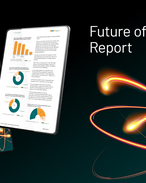The chairman of the independent Burrup Rock Art Monitoring Committee, Professor Frank Murray said the current levels of nitrogen oxides and sulphur dioxide emissions are very low, and modelling of future levels show they will be kept that way.
"Present levels of nitrogen oxides are about five per cent of the US standard and 10 per cent of the more rigorous Australian standard. The maximum predicted future levels will be about 10 per cent of the US standard and 20 per cent of the Australian standard.
"Current levels of sulphur dioxide are less than two per cent of the US standard and just three per cent of the more rigorous Australian standard. Maximum predicted future levels will be about five per cent of the US standard and eight per cent of the Australian standard."
Professor Murray said the WA Government had last year asked the Burrup Rock Art Monitoring Committee to conduct independent studies of the possible effect of emissions on the rock art, and provided initial funding of $350,000 for this purpose.
Monitoring and research to be conducted during the next four years will include measuring the current condition of the rock art, identifying and measuring ground level concentrations of any pollutants on the rock surfaces, investigating the natural processes and emissions that might degrade the rock art, monitoring changes over time, and then if necessary, proposing appropriate management measures.
"No scientific studies have yet been carried out to determine whether industrial emissions are affecting the rock art," said Professor Murray.
"We therefore want to establish a sound scientific baseline, with a set of measurements reproducible in the long term, that will ensure this community treasure is protected both now and into the future."
"If our final report says there is no evidence of damage to rock art, we may recommend monitoring continue over a longer period. However, if our study finds there are impacts, then we will address what can be done to reduce them," said Professor Murray.























